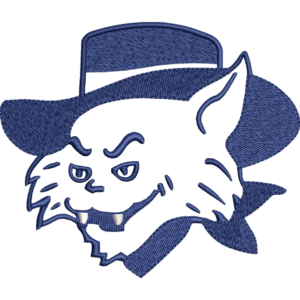Embroidery digitizing transforms artwork, logos, or patterns into digital stitch files (e.g., DST, PES) that embroidery machines use to create precise, high-quality designs on fabrics. While professional services like ZDigitizing offer a convenient, software-free solution, many businesses, designers, and hobbyists prefer using digitizing software for in-house control over the process. Choosing the right software is critical for achieving professional results, especially for complex designs or specialty techniques like 3D puff or appliqué. This comprehensive blog explores the best software for digitizing for embroidery, detailing their features, costs, and ideal use cases. A concise FAQ section at the end addresses common questions to guide users in selecting the right tool.
Why Use Embroidery Digitizing Software?
Embroidery digitizing software allows users to create and edit stitch files, offering flexibility for custom designs and hands-on control. However, it requires an investment in cost, time, and learning. Unlike professional services, which deliver files in 2-12 hours for $10-$20 per design, software is suited for those with frequent projects or a desire to master digitizing. The best software balances user-friendliness, advanced features, and compatibility with various machines and fabrics.
Top Software for Embroidery Digitizing
Below are the best digitizing for embroidery software options, highlighting their features, pricing, and ideal users.
1. Wilcom EmbroideryStudio
-
Description: Industry-leading software known for professional-grade digitizing and extensive features, widely used in commercial settings.
-
Key Features:
-
Advanced tools for creating satin, fill, and specialty stitches (e.g., 3D puff, appliqué).
-
Supports multiple file formats (DST, PES, EXP, JEF) for compatibility with most machines (e.g., Tajima, Brother, Janome).
-
Auto-digitizing for quick conversions and manual editing for precision.
-
Fabric-specific settings for optimizing stitches on cotton, knits, or twill.
-
Integration with CorelDRAW for seamless artwork editing.
-
-
Pricing: Approximately $4,000-$5,000 for EmbroideryStudio Designing (one-time purchase), with upgrades costing $500-$1,000.
-
Pros:
-
Professional-grade precision for complex designs and bulk production.
-
Extensive stitch libraries and customization options.
-
Reliable for commercial use with high-volume projects.
-
-
Cons:
-
Expensive, with a steep learning curve (weeks to months).
-
Requires a powerful computer (e.g., 16GB RAM, Windows 10+).
-
-
Best For: Professional embroiderers, large businesses, or studios handling complex logos, patches, or apparel designs.
-
Why Choose Wilcom?: Its robust features and industry-standard status make it ideal for professionals seeking full control.
2. Hatch Embroidery Software
-
Description: User-friendly software by Wilcom, designed for hobbyists and small businesses, balancing ease of use with powerful digitizing tools.
-
Key Features:
-
Auto-digitizing and manual editing for logos, monograms, and patterns.
-
Supports multiple formats (PES, JEF, VP3, DST) for home machines like Brother, Janome, or Pfaff.
-
Built-in design library with pre-made patterns and fonts for beginners.
-
Tools for appliqué, 3D puff, and cross-stitch designs.
-
Cloud-based file storage and tutorials for learning.
-
-
Pricing: $1,099-$1,499 for Hatch Embroidery Personalizer or Digitizer (one-time purchase), with monthly subscriptions (~$20-$30/month) for lower tiers.
-
Pros:
-
Beginner-friendly interface with step-by-step guides.
-
Affordable compared to Wilcom EmbroideryStudio.
-
Regular updates and community support.
-
-
Cons:
-
Less advanced than Wilcom for complex commercial projects.
-
Limited features in lower tiers (e.g., Organizer level).
-
-
Best For: Hobbyists, small businesses, or semi-professionals creating T-shirts, caps, or personalized gifts.
-
Why Choose Hatch?: Its balance of affordability and functionality suits users new to digitizing.
3. Brother PE-Design
-
Description: Proprietary software tailored for Brother embroidery machines, offering robust digitizing tools for home and small-scale use.
-
Key Features:
-
Auto-digitizing and manual stitch editing for logos, monograms, and patterns.
-
Optimized for PES format, with support for DST, EXP, and JEF.
-
Photo-stitch feature for converting images to embroidery designs.
-
Tools for appliqué and decorative stitches.
-
Integration with Brother machines for seamless workflow.
-
-
Pricing: ~$1,200 for PE-Design 11 (one-time purchase), with upgrades ~$300-$500.
-
Pros:
-
Seamless compatibility with Brother machines (e.g., PE800, SE1900).
-
User-friendly for beginners with built-in tutorials.
-
Affordable for Brother users compared to Wilcom.
-
-
Cons:
-
Limited compatibility with non-Brother machines.
-
Fewer advanced features for commercial-scale projects.
-
-
Best For: Brother machine owners, hobbyists, or small businesses focusing on home embroidery projects.
-
Why Choose PE-Design?: Its Brother-specific optimization and affordability make it ideal for dedicated Brother users.
4. Bernina ArtLink/DesignerPlus
-
Description: Software suite for Bernina machine owners, with ArtLink (free) for basic editing and DesignerPlus for advanced digitizing.
-
Key Features:
-
DesignerPlus offers full digitizing with satin, fill, and appliqué tools.
-
Supports EXP and other formats compatible with Bernina and some commercial machines.
-
Auto-digitizing and manual editing for custom designs.
-
3D visualization for previewing designs on virtual fabrics.
-
ArtLink (free) allows basic resizing and format conversion.
-
-
Pricing: ArtLink is free; DesignerPlus costs ~$1,500-$2,000 (one-time purchase).
-
Pros:
-
Free ArtLink for basic tasks, ideal for beginners.
-
DesignerPlus offers professional features for Bernina users.
-
Intuitive interface with Bernina machine integration.
-
-
Cons:
-
DesignerPlus is expensive for non-Bernina users.
-
Limited format support compared to Wilcom or Hatch.
-
-
Best For: Bernina machine owners or small businesses needing reliable digitizing tools.
-
Why Choose Bernina?: ArtLink is a cost-free entry point, while DesignerPlus suits advanced Bernina users.
5. Embird
-
Description: Affordable, modular software for hobbyists and small businesses, offering flexible digitizing and editing capabilities.
-
Key Features:
-
Basic digitizing with satin, fill, and appliqué stitches.
-
Supports multiple formats (DST, PES, JEF, VP3) for various machines.
-
Modular add-ons (e.g., Font Engine, Sfumato Stitch) for customization.
-
Cross-stitch and photo-stitch capabilities.
-
Lightweight, runs on older computers.
-
-
Pricing: ~$150 for Basic Embird, with modules $20-$100 each (one-time purchase).
-
Pros:
-
Highly affordable with customizable modules.
-
Easy to learn for beginners, with a supportive community.
-
Compatible with most home embroidery machines.
-
-
Cons:
-
Less advanced than Wilcom or Hatch for complex designs.
-
Modular pricing can add up for full functionality.
-
-
Best For: Budget-conscious hobbyists or small businesses with home machines.
-
Why Choose Embird?: Its low cost and flexibility make it a great entry-level option.
Choosing the Right Software
Selecting the best digitizing software depends on your needs, budget, and experience level:
-
Identify Your Machine: Check your machine’s supported formats (e.g., PES for Brother, EXP for Bernina) to ensure compatibility.
-
Assess Project Needs:
-
Simple Projects: Embird or Hatch for monograms, T-shirts, or gifts.
-
Complex Designs: Wilcom for logos, patches, or bulk production.
-
Brand-Specific Needs: PE-Design for Brother, DesignerPlus for Bernina.
-
-
Consider Budget:
-
Low Budget: Embird ($150-$300) or Bernina ArtLink (free).
-
Mid-Range: Hatch ($1,099-$1,499) or PE-Design ($1,200).
-
High-End: Wilcom ($4,000-$5,000) for professional use.
-
-
Evaluate Learning Curve: Choose user-friendly options like Hatch or Embird for beginners, or Wilcom for advanced users willing to invest time.
-
Test Free Trials: Many programs (e.g., Hatch, Embird) offer trials to test features before purchasing.
Tip: If software costs or learning curves are prohibitive, professional services like ZDigitizing ($10-$20 per design, 2-12 hour delivery) offer a cost-effective alternative without requiring software.
Professional Services vs. Software
While software offers control, professional digitizing services have distinct advantages:
-
Professional Services (e.g., ZDigitizing):
-
Cost: $10-$20 per design, no upfront investment.
-
Time: Files delivered in 2-12 hours, no learning curve.
-
Ease: User-friendly, with 24/7 support and digital previews.
-
Best For: Beginners, one-off projects, or those avoiding software costs.
-
-
Software:
-
Cost: $150-$5,000 upfront, plus learning time.
-
Time: Days per design for beginners, weeks to learn software.
-
Ease: Requires technical skills and practice.
-
Best For: Frequent digitizers or those needing full design control.
-
Verdict: Software suits users with ongoing projects and a willingness to learn, while professional services are ideal for quick, high-quality results without investment.
Applications of Digitizing Software
These software options support various projects:
-
Corporate Branding: Create logoed uniforms or caps (Wilcom, Hatch).
-
Promotional Products: Design shirts or bags for marketing (PE-Design, Embird).
-
Fashion Collections: Craft custom patterns for apparel (Wilcom, DesignerPlus).
-
Personalized Gifts: Monogram towels or blankets (Hatch, Embird).
-
Sports Merchandise: Embroider team logos on jerseys (Wilcom, PE-Design).
Each software supports these applications, with varying levels of complexity and cost.
Technologies Enhancing Digitizing Software
Modern software leverages advanced tools:
-
AI Optimization: Auto-digitizing and error detection streamline design creation.
-
Cloud Integration: Hatch and Wilcom offer cloud storage for easy access and updates.
-
3D Visualization: Preview designs on virtual fabrics for accuracy.
These features improve efficiency and quality.
Future Trends in Digitizing Software
Emerging technologies will enhance software capabilities:
-
Augmented Reality (AR): Preview designs on virtual items for precise placement.
-
AI-Driven Tools: Suggest stitch types or densities for faster digitizing.
-
IoT Integration: Sync with smart machines for seamless file transfers.
These advancements will make software more intuitive and efficient.
Conclusion
The best software for digitizing for embroidery depends on your needs: Wilcom EmbroideryStudio ($4,000-$5,000) for professionals, Hatch Embroidery ($1,099-$1,499) for hobbyists and small businesses, Brother PE-Design ($1,200) for Brother users, Bernina ArtLink/DesignerPlus (free-$2,000) for Bernina owners, and Embird ($150-$300) for budget-conscious beginners. Each offers unique features, from advanced tools to user-friendly interfaces. For those avoiding high costs or learning curves, professional services like ZDigitizing provide high-quality files in 2-12 hours for $10-$20 per design. As AR, AI, and IoT technologies evolve, digitizing software will become even more powerful, but professional services remain a practical alternative for many.
FAQs About Embroidery Digitizing Software
What is the best software for embroidery digitizing?
Wilcom for professionals, Hatch or Embird for hobbyists, PE-Design for Brother users, and DesignerPlus for Bernina owners.
How much does digitizing software cost?
Ranges from $150 (Embird) to $5,000 (Wilcom), with free options like Bernina ArtLink for basic tasks.
Do I need software to digitize embroidery?
No, professional services like ZDigitizing ($10-$20 per design) digitize without software.
Which software is best for beginners?
Hatch or Embird for their user-friendly interfaces and affordability.
What file formats do digitizing software support?
DST, PES, JEF, VP3, EXP, and more, depending on the software and machine.
How long does it take to learn digitizing software?
Weeks to months, depending on the software (e.g., Embird is quicker, Wilcom is complex).
Can software handle 3D puff or appliqué?
Yes, Wilcom, Hatch, PE-Design, and DesignerPlus support specialty techniques.
What’s the alternative to digitizing software?
Professional services like ZDigitizing deliver files in 2-12 hours without software.
What technologies enhance digitizing software?
AI optimization, cloud integration, and 3D visualization improve efficiency and accuracy.
What’s the future of digitizing software?
AR previews, AI tools, and IoT integration will streamline and enhance digitizing.


